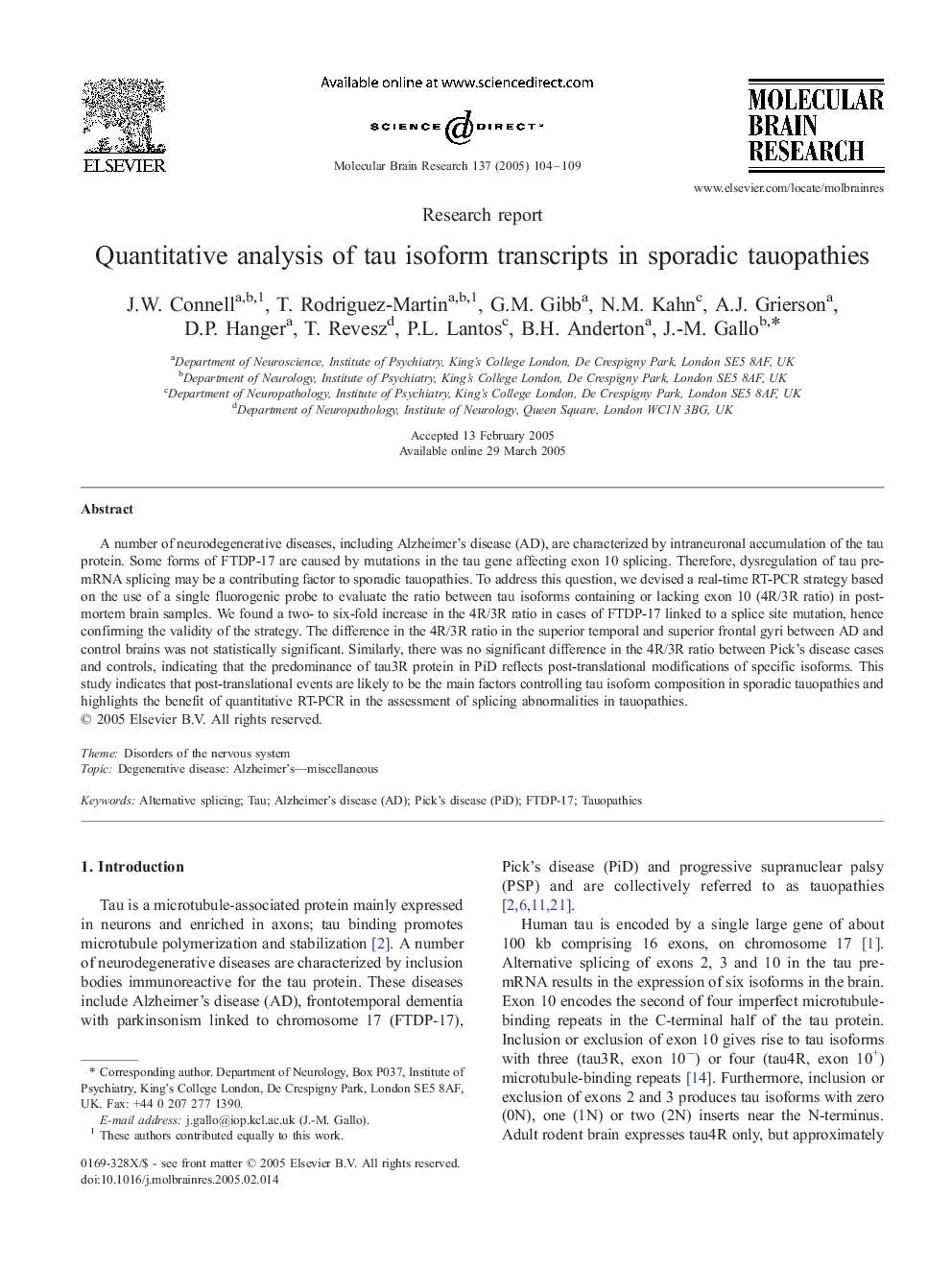| Article ID | Journal | Published Year | Pages | File Type |
|---|---|---|---|---|
| 9410765 | Molecular Brain Research | 2005 | 6 Pages |
Abstract
A number of neurodegenerative diseases, including Alzheimer's disease (AD), are characterized by intraneuronal accumulation of the tau protein. Some forms of FTDP-17 are caused by mutations in the tau gene affecting exon 10 splicing. Therefore, dysregulation of tau pre-mRNA splicing may be a contributing factor to sporadic tauopathies. To address this question, we devised a real-time RT-PCR strategy based on the use of a single fluorogenic probe to evaluate the ratio between tau isoforms containing or lacking exon 10 (4R/3R ratio) in post-mortem brain samples. We found a two- to six-fold increase in the 4R/3R ratio in cases of FTDP-17 linked to a splice site mutation, hence confirming the validity of the strategy. The difference in the 4R/3R ratio in the superior temporal and superior frontal gyri between AD and control brains was not statistically significant. Similarly, there was no significant difference in the 4R/3R ratio between Pick's disease cases and controls, indicating that the predominance of tau3R protein in PiD reflects post-translational modifications of specific isoforms. This study indicates that post-translational events are likely to be the main factors controlling tau isoform composition in sporadic tauopathies and highlights the benefit of quantitative RT-PCR in the assessment of splicing abnormalities in tauopathies.
Keywords
Related Topics
Life Sciences
Neuroscience
Cellular and Molecular Neuroscience
Authors
J.W. Connell, T. Rodriguez-Martin, G.M. Gibb, N.M. Kahn, A.J. Grierson, D.P. Hanger, T. Revesz, P.L. Lantos, B.H. Anderton, J.-M. Gallo,
